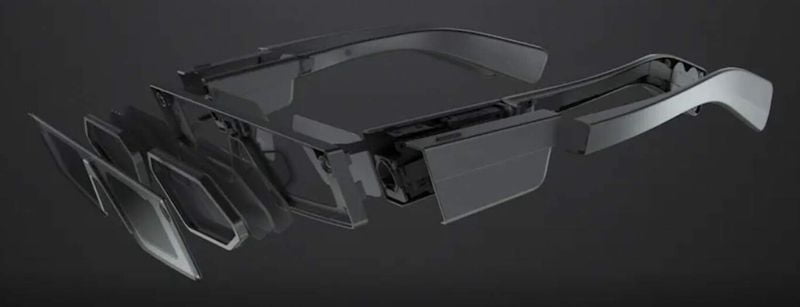During the brand’s annual event, Snapchat has unveiled what are its fourth generation Spectacles. The fourth generation of Spectacles and the first augmented reality. The new glasses allow the combination of virtual reality with the real environment. However, they will only be distributed to “creators”.
Snapchat had so far presented three models of smart glasses. With their pluses and minuses, they had a similar design where the style predominated with a very large front camera.

Its design features a thick and massive black frame that contains stereo speakers, four microphones, two cameras, and a touch panel. With the touch panel, users can navigate to change the available lens or other options. When doing so, the augmented reality effect appears and users can interact with it.
The technology behind the new Spectacles works similarly to the technology used in mobile augmented reality. The difference, of course, is that there is no mobile. The glasses allow digital elements to be displayed in the real environment in real-time.
Tapping the vast potential of @Snap’s AR platform, the next generation of Spectacles allow you to overlay Lenses directly onto the world in front of you, for an immersive AR experience. #SnapPartnerSummithttps://t.co/r4XnSC886z pic.twitter.com/UTDDoxwBOO
— Spectacles (@Spectacles) May 20, 2021
Delving a little deeper into its specs, Snapchat says the new Spectacles include 3D displays with up to 2,000 nits brightness. It has also let on other details such as having six degrees of freedom in motion, automatic marker tracking, or photon motion latency of 15 s.

A product that will not be sold en masse
Augmented reality seems to be the next big step in technology. Different manufacturers are betting on it, highlighting Facebook with its Oculus division or Apple with its efforts with ARKit. Nor should we forget what Niantic is doing.

Snapchat here has a huge experience with all its augmented reality ecosystem that it has built in recent years in its app. However, it will not be with these glasses that they will conquer the market. The glasses will not be offered for sale but will be offered only to selected “creators” on the platform.
They have not wanted to indicate why this, although there are several clues about it. The most important of all is the development of augmented reality technology. Probably these glasses will not reach a minimally decent level of performance and for which the user will decide to pay a reasonable enough price. A “test” with a select group of users may help to improve the technology for the next generation.





